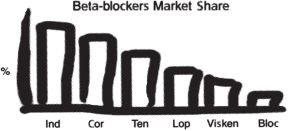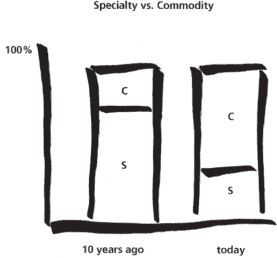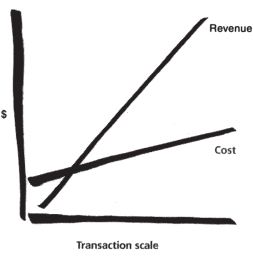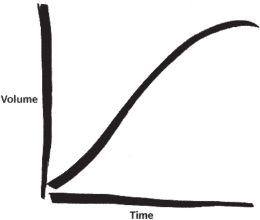The Art of Profitability - booknotes
Adrian Slywotzky is a Vice President at Mercer Management Consulting who has consulted for various major corporations and authored several bestselling books on business strategy. His focus has been on developing strategies for customer-centric growth and new profit opportunities.
Here is the summary with an excerpt paragraph for each key concept, as generated by ChatGPT.
A. Customer Solution Profit

The Customer Solution Profit model involves investing substantial time upfront to deeply understand customer needs, then customizing offerings to specifically address those needs. While losing money initially, this lays the foundation for significant long-term profits from closely tailored solutions.
B. Pyramid Profit

Pyramid Profit refers to methodically covering all price points in a market by offering low-, medium-, and high-end product versions. This locks out competition from entering at the low end, while generating strong margins at the high end. The model creates a "firewall" at the base and big profits at the apex of the pyramid.
C. Multi-Component Profit

The Multi-Component Profit model involves disaggregating a business into its various components and maximizing the profit opportunities specifically from the highest-margin elements. As different components can have widely varying levels of profitability, this focus isolates and intensifies the most lucrative pieces.
D. Switchboard Profit

Switchboard Profit consists of controlling the critical connections between suppliers and customers in an industry, serving as an intermediary "switchboard" between the two sides. By reaching a critical mass of relationships on both ends, a company can extract substantial value from brokering the exchanges across its platform.
E. Time Profit

With Time Profit, early heavy investment is used to establish a strong position and mindshare in a nascent market. Margins are high as competitors have yet to enter. Investment is gradually reduced as more competition intensifies and margins decline in later phases of the mature market.
F. Blockbuster Profit
The Blockbuster Profit model entails concentrating resources and talent on nurturing select offerings that have potential home-run status into "blockbuster" hits. Careful risk management ensures failures are cut quickly, while all efforts focus on propelling likely big winners. Upside is maximized while downside is minimized.
G. Profit-Multiplier Model

Profit Multiplier involves reusing or repurposing successful offerings by tailoring them to multiple markets and customer segments, improving the odds of success while reducing required investments and costs. Like a tree branching out, a single base product or service is leveraged extensively.
H. Entrepreneurial Profit
Entrepreneurial Profit emphasizes relentless efficiency and cost discipline throughout all operations. Saving pennies on costs while vigorously boosting revenues can lead to a self-reinforcing cycle of growth and profitability fueled by the collective energy and culture.
I. Specialist Profit

With Specialist Profit, a company thoroughly dominates a niche market space by understanding specific customer needs better than anyone else. Margins can substantially exceed those of generalists competing more broadly across segments. Deep connection with the target segment also speeds sales cycles and provides customer loyalty.
J. Installed Base Profit

Installed Base Profit relies on follow-on sales of supplies, accessories and services to a captive customer base that's made an initial product purchase. Having bought the core offering, customers depend on the seller for crucial after-sale items required for ongoing operations, which can sport extremely high margins.
K. De Facto Standard Profit
De Facto Standard Profit emerges when a company's product or system becomes the entrenched standard across an industry. Buyers may actively market it to others as they want compatible systems adopted. Significant advantages accrue to the standard setter, with cost and marketing efficiencies unlocked.
L. Brand Profit

Brand Profit results from cumulative investment in advertising and promotion gradually cementing strong brand equity and customer loyalty over time. This allows for premium pricing and insulation against economic volatility. Maintaining consistent messaging that resonates with the target market is critical.
M. Specialty Product Profit

Specialty Product Profit comes from patented products that enjoy temporary monopoly-like economics, with high margins and customer dependence until alternatives emerge. Managing the portfolio pipeline via careful project selection and resource allocation is imperative to ride successive waves of temporary exclusivity.
N. Local Leadership Profit

A Local Leadership position emerges when a company concentrates on thoroughly dominating a geographic territory, saturating it by blocking rivals. This limits competitors' scale, keeping profits robust even in unattractive industry spaces. Regional leadership fuels expansion into adjacent territories.
O. Transaction Scale Profit

Transaction Scale Profit prioritizes large, higher-margin sales over maximizing transaction volume, purposely turning away smaller, less profitable orders. Cultivating relationships with big-spending customers and configuring operations to simplify serving this top tier underpins this approach's success.
P. Value Chain Position Profit
Value Chain Position Profit means controlling the most strategically important Leverage Points within an industry rather than across the overall value chain. These choke points see high volumes pass through, can dictate terms and conditions, and wield influence over ecosystem-wide activities.
Q. Cycle Profit

Cycle Profit refers to proactively managing margins over the fluctuations of business cycles by adeptly adjusting pricing in anticipation of swings. Buoying prices early helps build war chests to weather downturns, while disciplined reductions during peaks keeps demand roaring. A moderated trajectory of earnings emerges.
R. After-Sale Profit
After-Sale Profit capitalizes on lucrative, sustained sales of follow-on items flowing from initial product purchases. By controlling crucial supplies, upgrades, accessories or services that enable customers' continued use of core product, incredibly high margins can be captured thanks to low price sensitivity.
S. New Product Profit


New Product Profit aims to aggressively invest in and pump up sales of hot new offerings during growth boom times when margins are fat, then systematically withdraw as more competition enters, ushering decline. Being first to catch and depart the trend waves is key, while resisting being swept up in the frenzy.
T. Relative Market Share Profit

Relative Market Share Profit means leveraging commanding scale leadership to dictate favorable terms, attract premium talent, drive the largest innovations, gain invaluable customer intelligence and influence ecosystem evolution. Robust margins and stability result from this self-reinforcing competitive dominance.
U. Experience Curve Profit
Experience Curve Profit relies on aggressively stripping out costs as operations scale, tracking detailed performance to optimize improvements over time. Maintaining zealous focus here while avoiding the blindness of overfocus is key to surfing down the cost curve ahead of rivals amid market turbulence.
V. Low-Cost Business Design Profit
Low-Cost Business Design delivers 10X cost advantages woven into operations DNA through transformed processes and elimination of unnecessary expenses. Fresh, blank-sheet thinking spawns creative new models that obsolete prior orthodoxies by unlocking major efficiencies rivals can't match.
W. Digital Profit
Digital Profit represents the massive performance improvements and customer empowerment enabled in digitized processes, from supply chains to sales. Enabling self-service and systematizing activities lead to radically higher productivity and profitability, invalidating certain traditional profit models.
